Video conferencing systems
Providing
The Complete Guide to Audio Video Conferencing Systems (AVCS) and the Rapidly Changing Corporate World
Help your people collaborate from anywhere. Our video conferencing solutions help you catch every nuance and get more done. Make every meeting count and reduce operational costs for everything from sales and product development to doctor-patient consultations and teacher-student sessions.
Help your team collaborate from anywhere. Our HD video conferencing equipment helps you catch every nuance and get more done. Make every meeting count and reduce operational costs for everything from sales and product development to doctor-patient consultations and teacher-student sessions.
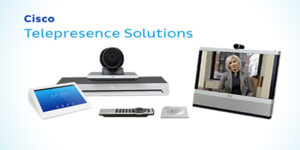
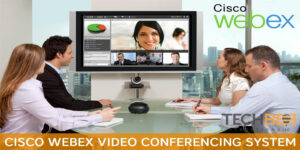


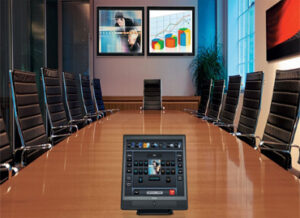
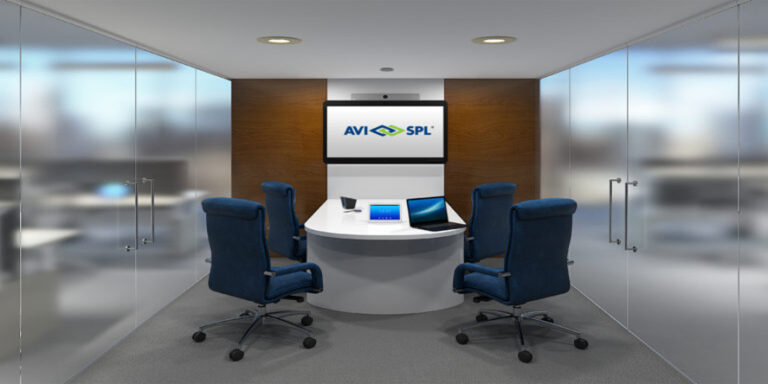
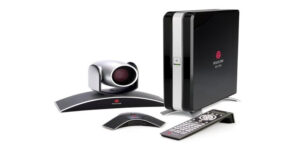
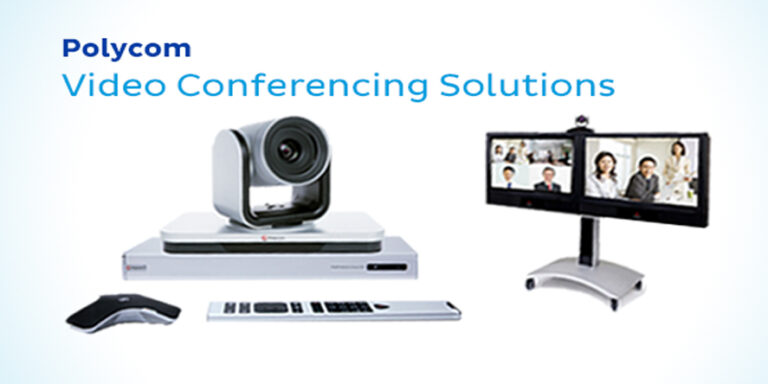
Please fill the form below
HAVE MORE QUESTIONS?
DON'T HESITATE TO CONTACT US
Contact us for customised solutions as per your business needs. Our experts will guide you shortly.
The history of audio video conferencing systems (AVCS) is closely intertwined with the history of the modern corporation. AVCS have been used by businesses for decades to facilitate communication between employees who are located in different parts of the world.
The first audio video conferencing system was developed in the early 1960s by Bell Labs. This system was called Picturephone and it was designed to allow users to make video calls over the telephone network. Picturephone was not a commercial success, but it did pave the way for future AVCS development.
In the 1970s, a company called LifeSize developed the first commercially viable AVCS. This system used a combination of analog and digital technology to provide high-quality video and audio conferencing. LifeSize’s AVCS was adopted by many major corporations, including IBM and AT&T.
Since then, there have been many advances in AVCS technology. The introduction of broadband Internet connections and high-definition (HD) video cameras has made it possible to provide HD video conferencing services.
An audio video conferencing system can be a great asset for any business. Conference calls allow businesses to communicate with employees, customers, and clients from all over the world without having to physically be in the same room. There are many advantages of using an audio video conferencing system, including:
1) Improved communication: Audio and video conferencing systems can help improve communication within a company by allowing employees to see and hear each other clearly. This can help reduce misunderstandings and miscommunication.
2) Increased productivity: Conference calls can help increase productivity by eliminating travel time and expenses. Employees can participate in meetings from their desks, which saves time and money.
3) Cost-effective: Audio and video conferencing systems are cost-effective because they eliminate the need for travel. Companies can save money on airfare, hotel expenses, and car rentals by holding conference calls.
4) Flexible: Conference calls are flexible because they can be held at any time and from anywhere. Employees can participate in meetings from their flexibility An audio video conferencing system.
Are you looking for a way to improve communication and collaboration within your business? If so, you may want to consider investing in an audio video conferencing system. Audio video conferencing can provide many benefits for businesses, including improved communication, increased productivity, and reduced travel costs. Here are 5 amazing use cases for audio video conferencing:
1) Employee training: Audio and video conferencing can be used to train employees. Companies can provide training sessions for new employees or provide refresher courses for existing employees. Employees can participate in training sessions from their desks, which saves time and money.
2) Better decision making: Audio video conferencing can help improve decision making by allowing businesses to gather input from a variety of stakeholders.
3) Sales presentations: Conference calls can be used to give sales presentations. Companies can use audio and video conferencing to give presentations to prospective clients.
4) Business meetings: Conference calls can be used to hold business meetings. Companies can use audio and video conferencing to hold meetings with employees, clients, and customers.
5) Webinars: Conference calls can be used to host webinars. Companies can use audio and video conferencing to host educational or informational webinars.
Audio video conferencing can provide many benefits for businesses. If you are looking for a way to improve communication and collaboration within your business, an audio video conferencing system may be the right solution for you.
The AVCS market is a competitive one, with many vendors offering a variety of solutions. So how do you choose the right AVCS for your business needs?
If you are looking to improve your content marketing strategy and increase the number of leads coming in, then you should consider investing in an AVCS that can help you with content creation. Using an AI-powered tool will help you create more engaging content, which will result in more organic traffic and better conversion rates.
If on the other hand, your primary goal is to reduce costs while maintaining high quality standards, then an AVCS that offers automated content production could be a good option for you. You won’t have to worry about hiring new employees or paying expensive rates for freelance writers anymore.
Video conferencing modes are a great option for connecting with your team members and clients. There are many video conferences available today but not all of them will be suitable for the needs of your business. This article will guide you through the best video conferencing modes that can help you connect with your team members and clients. The first mode is the in-person meeting: it’s the best way to meet with people face to face, but that doesn’t mean it’s the only option!
The best video conferencing modes are to use Skype, Google Hangout, and Zoom.
Skype: Skype is usually the cheapest solution, but it doesn’t offer HD quality and you don’t get any benefits of enterprise-grade features like network redundancy or encryption.
Google Hangout: This is the most economical conference call service available that also allows you to create presentations and share your screen during the call. It offers HD quality video, but people can only talk with one another through a built-in microphone/speaker system on their computer or mobile device. Like Skype, there are no enterprise-grade features such as redundant networks or encryption for added security.
Zoom: Zoom’s video conferencing solutions are versatile and offer a conference room with all the features of a Zoom Room, or a more streamlined experience with low bandwidth usage and an HD video conferencing experience.
Zoom Rooms give you the best of both worlds – the wide-angle view and natural light of in-person meetings, combined with the enhanced visibility, sound quality, and mobility of video conferencing. Zoom Rooms can be booked either by reservation or on demand.
Zoom Rooms give you the best of both worlds – the wide-angle view and natural light of in-person meetings, combined with the enhanced visibility, sound quality, and mobility of video conferencing. Zoom Rooms can be booked either by reservation or on demand.
There are many key features to consider when choosing a video conferencing software solution for your business. Here are some of the most important:
1) Screen sharing:
This allows all participants to see the same screen, making it much easier to collaborate on projects or review documents.
2) Simultaneous annotation:
This feature allows users to make comments and annotations on shared screens in real time, making collaboration even easier.
3) Chat box:
A chat box allows participants to communicate with each other via text chat, making it easy to ask questions or share ideas.
4) File sharing:
This allows users to easily share files with each other during a call, making it simple to collaborate on projects.
5) Video call recording:
This allows businesses to record their video calls for later review or training purposes.
6) Noise cancellation:
This helps to reduce background noise on calls, making it easier to hear what others are saying.
7) Device switching:
This allows users to easily switch between different devices during a call, such as a laptop and a tablet. This can be helpful if you need to show something on a larger screen or want to use a different input device.
Audio video conferencing systems have become a staple for businesses of all sizes in recent years.
There are many reasons for this, but the two most often cited are that they provide a more personal way to communicate with customers and employees who may be located in different parts of the world, and they can save businesses money on travel costs.
Smart Vision Technologies is one of the leading providers of audio video conferencing solutions. We offer a wide range of products and services that can meet the needs of any business, no matter what their size or budget.
If you’re looking for an audio video conferencing system for your business, we encourage you to contact us today to learn more about what we can offer.
Looking for an audio video conferencing solution that can help your business communicate better? Panasonic offers a wide range of conference systems to suit different business needs. From small businesses to large enterprises, Panasonic has a solution that can help improve communication and collaboration within your company.
Some of the top brands in the audio video conferencing industry include Panasonic, Cisco, Polycom, and Lifesize. Each of these brands offers a different set of features and benefits that can help your business communicate more effectively. When choosing an audio video conferencing solution, it’s important to consider your specific business needs and choose a system that will best meet those needs.
There are three main types of video conferencing systems: Telepresence, Integrated, and Service-based.
Telepresence Video Conferencing System:
Telepresence is a high-end solution that offers the best possible audio and video quality. It is perfect for companies who need to conduct meetings with clients or partners who are located in different parts of the world.
Integrated Video Conferencing System:
An integrated system is a more affordable option that is perfect for small to medium businesses. It offers good audio and video quality, and it can be easily installed on your existing computer network.
Service-based Video Conferencing System:
A service-based system is a cloud-based solution that offers the convenience of not having to install any software. It is perfect for businesses who need to conduct meetings on a regular basis.
There are three main types of video conferencing systems: Telepresence, Integrated, and Service-based.
Telepresence Video Conferencing System:
Telepresence is a high-end solution that offers the best possible audio and video quality. It is perfect for companies who need to conduct meetings with clients or partners who are located in different parts of the world.
Integrated Video Conferencing System:
An integrated system is a more affordable option that is perfect for small to medium businesses. It offers good audio and video quality, and it can be easily installed on your existing computer network.
Service-based Video Conferencing System:
A service-based system is a cloud-based solution that offers the convenience of not having to install any software. It is perfect for businesses who need to conduct meetings on a regular basis.
Clearly, there are several options to consider when selecting the best video conferencing system for your organization’s needs. All of these platforms include standard features for HD video and audio calls. Some may, however, be more advanced than others, providing additional tools for collaboration, file sharing, and recording. Crafty Dish services are available if you want to test out the features of a top video conferencing software.
To help you make your decision, we’ve compiled a list of the most important factors to consider when selecting video conference tools.
Boardroom AV Solutions
We provide a wide range of cutting-edge technology products to meet the needs of your boardroom.
Solutions for Displays
Displays on interactive panels
Distance learning with interactive projectors and whiteboards
Touchscreens in large sizes
4K and HD displays
Personalized design and installation
Multi-user, multi-touch video wall with multiple, concurrent 1080p displays
Audio Systems for Boardrooms
Several inputs and outputs
Treatment for acoustics
Speakers with high fidelity
Control systems that are intuitive
Projector Systems for Boardrooms
Whiteboard interactive projectors Distance education
Projectors with high resolution
Energy-saving light bulbs
Screens that are visually stunning
Control systems that are intuitive
System of Collaboration
Classrooms and meeting rooms for Zoom and Office Teams
Complete room integrations with cameras, microphones, and simple Digital Canvas Digital Signage
Displays in 4K and HD
Management software that is intuitive Optimized placements
Commercial Audio Solutions:
With a wealth of product knowledge and many years of experience in commercial audio equipment, public address, and background music systems, we believe we have the expertise to provide you with assistance on all aspects of your sound reinforcement project.
We offer conference, induction loop, and infrared hearing systems, as well as commercial audio amplifiers, loudspeakers, microphones, mixers, and music players.
Auditorium Solutions:
Auditorium solutions assists in the implementation of AV technology for centralized auditorium management via simple touch-based controllers. Almost any electronic or electrical system, including HVAC, sound systems, lighting, drapes, AV devices, projectors, screens, cameras, video conferencing systems, and so on, can be integrated with our control systems.
Av receivers dealers:
A home theatre audio/video receiver (AVR) is a consumer electronics component. Its function is to accept audio and video signals from various sources, process them, and provide power amplifiers to drive loudspeakers and route video to displays such as a television, monitor, or video projector. Satellite receivers, radios, DVD players, Blu-ray Disc players, VCRs, and video game consoles, among other things, can provide input. A remote controller is typically used to control AVR source selection and settings such as volume. We provide you with a best quality solutions with high quality
Denon dealers:
The powerful Denon Home 350, with its amazing sound stage, transports your music to every corner of any room, even large ones. Combine it with another Denon Home 150 for stereo or other HEOS Built-in products. The Denon Envaya is an excellent utilitarian speaker. Crafty Dish is one of the best dealers available for you with high client base and high flow of reviews.
If you’re looking for an audio video conferencing system, Sterling Systems is the best provider. We’ve been in the business for over 5+ years in Hyderabad City and have a wide range of products that will suit your needs. Our systems are easy to use and provide amazing HD quality video and sound. Contact us today to learn more about our solutions or visit our website to see product demonstrations. Thanks for reading!

